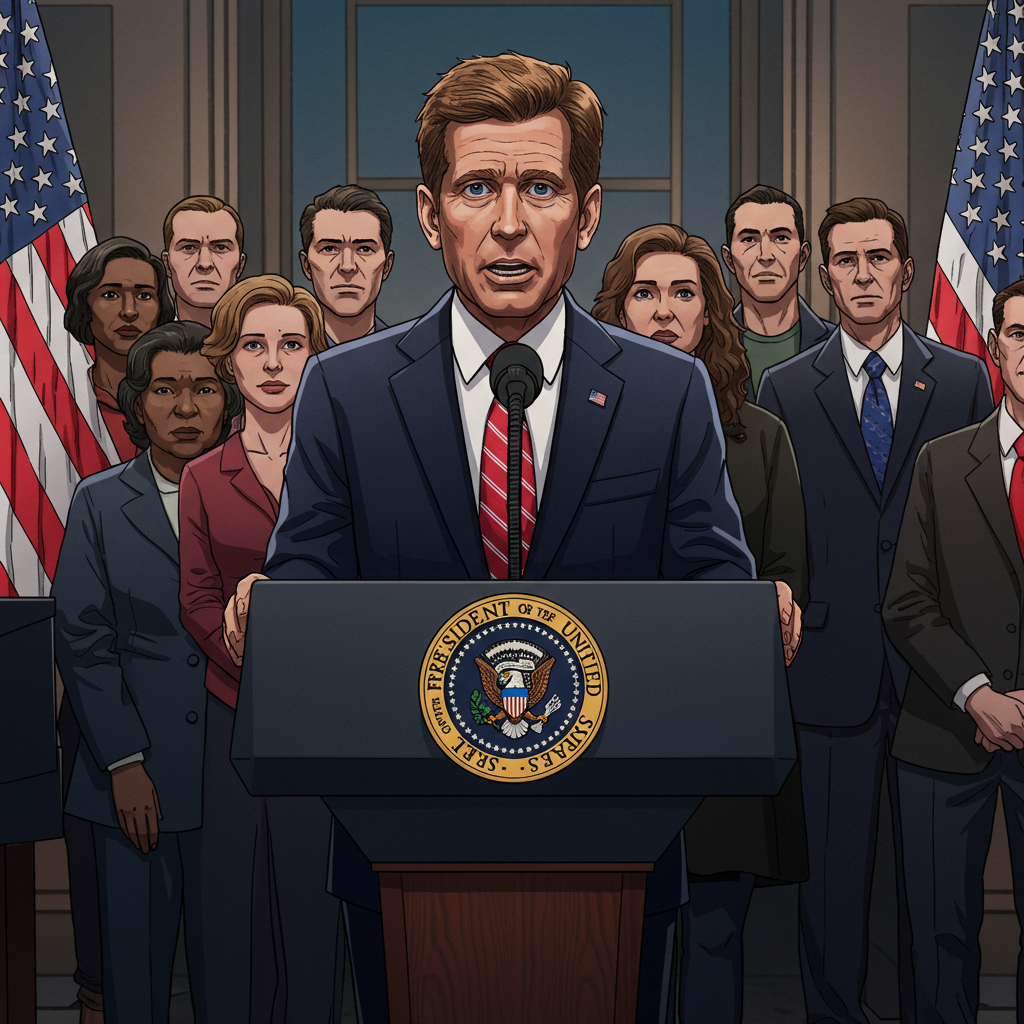The landscape of COVID-19 vaccination in the United States has dramatically shifted, leaving many citizens grappling with widespread confusion, anxiety, and frustration. Recent federal restrictions, spearheaded by President Trump’s health secretary, Robert F. Kennedy Jr., have significantly narrowed who can receive the latest generation of COVID-19 vaccines. This policy change departs from previous guidelines that allowed broad access, now reserving shots primarily for those at elevated risk of severe illness. Understanding these new federal vaccine restrictions is crucial for anyone seeking protection against the virus.
This guide delves into the details of these controversial changes, exploring the real-world impact on individuals and families. We’ll examine the varying state-level interpretations, the practical hurdles faced by many, and the growing concern among public health experts. From individuals turned away at pharmacies to parents desperately seeking to protect vulnerable loved ones, the narrative reflects a nation struggling to navigate an increasingly complex immunization framework.
A Drastic Shift in COVID-19 Vaccination Access
Previously, the latest COVID-19 vaccines were readily available to nearly anyone aged six months and older. However, under the new directives, eligibility is now largely confined to specific demographics. Individuals aged 65 and older are prioritized, alongside those with particular underlying health conditions that elevate their susceptibility to severe COVID-19 complications. This includes a range of factors such as compromised immune systems, chronic conditions like asthma, diabetes, and high blood pressure, and even a sedentary lifestyle or depression. The FDA has approved updated mRNA vaccines from Moderna and Pfizer-BioNTech, and Novavax, under this revised framework.
Health and Human Services Secretary Robert F. Kennedy Jr. has publicly justified these changes by asserting that a majority of the population now possesses sufficient immunity. He has also voiced skepticism regarding vaccine safety and effectiveness, a stance that stands in stark contrast to the vast scientific consensus embraced by most public health professionals. Kennedy has framed this new approach as delivering “science, safety, and common sense,” while simultaneously revoking emergency use authorizations (EUAs) for the vaccines. This means access now often necessitates a doctor’s consultation, adding another layer of complexity.
The Patchwork of Rules: State-by-State Variations Create Chaos
The implementation of these federal vaccine restrictions is far from uniform across the nation. Reports indicate a confusing “patchwork of rules” that vary significantly from state to state, and even from pharmacy to pharmacy. While some eligible individuals might still secure a vaccine through “self-attestation” – simply declaring their eligibility to a pharmacist – many others are being turned away. This inconsistency generates immense difficulty for those trying to understand and comply with the new COVID vaccine eligibility criteria.
One common hurdle involves pharmacists demanding a doctor’s note or a prescription to verify eligibility. This often leads to frustrating and time-consuming efforts for individuals who are genuinely at high risk. Numerous accounts highlight people being rejected even after obtaining a doctor’s order, further deepening the sense of anger and bewilderment. The practical implications are severe: individuals are sometimes forced to travel extensively, moving between pharmacies, doctors, and even across state lines, in a desperate “hunt” for a shot they believe is essential for their health and safety.
Personal Stories: Frustration and Fear on the Front Lines
The impact of these new rules is profoundly personal, touching the lives of many Americans. Jason Mitton, a 55-year-old resident of Austin, Texas, illustrates this struggle vividly. Despite managing high blood pressure, a recognized risk factor, he was denied vaccination before a business trip because he lacked a doctor’s note. Mitton openly expressed his outrage, stating, “it feels like the right to get the vaccine is being prevented.” He believes strongly in an individual’s right to choose vaccination.
Beyond personal protection, a powerful driver for seeking vaccination is the desire to shield vulnerable family members. Many healthy individuals want to get vaccinated to prevent transmitting the virus to elderly relatives, very young children, or those with compromised immune systems due to conditions like cancer, heart failure, diabetes, or recent organ transplants. Allison Coach, a healthy 32-year-old from Bristol, Connecticut, exemplifies this concern. She faces immense frustration trying to secure a vaccine for herself to protect her father, who suffers from heart failure, other family members with chronic illnesses, and her 16-month-old son, for whom COVID-19 can pose significant dangers. Coach described her feelings as “angry… frustrated… scared,” highlighting the arduous “hoops” she must jump through. She is even contemplating falsely claiming eligibility for herself, a testament to her desperation, but sees no viable path to vaccinate her infant.
Expert Warnings and Public Health Alarm
The new COVID vaccine eligibility restrictions and the rhetoric surrounding them have triggered widespread alarm among public health authorities. Many infectious disease specialists and medical groups have vocally denounced the limitations as unwarranted, unscientific, and potentially dangerous. Dr. Tina Tan, President of the Infectious Disease Society of America, has voiced deep concern that these restrictions could expose the entire American population to severe COVID-19 and its complications, predicting a subsequent rise in hospitalizations and fatalities. Similarly, Michael Osterholm, a prominent director in infectious disease research, has starkly labeled the situation “a disaster waiting to happen.”
These policy changes unfold amidst an ongoing summer COVID-19 wave, which has already seen an uptick in pediatric emergency room visits and continues to claim over 100 lives weekly across the U.S. Experts fear that the pervasive public confusion will only exacerbate these trends by deterring many who would benefit from vaccination. The Centers for Disease Control and Prevention (CDC) has notably ceased advocating for routine vaccination for all healthy children and pregnant women, a decision that many medical professionals find deeply troubling.
Navigating Contradictions and Future Uncertainties
Adding to the complexity, there are notable contradictions within the current guidelines. While the CDC has backed away from routine recommendations for healthy pregnant women, pregnancy is still listed as a risk factor for the new vaccines under the FDA and CDC’s updated framework. Major medical bodies, including the American Academy of Pediatrics and the American College of Obstetricians and Gynecologists, continue to strongly advise vaccination for all pregnant individuals and very young children, emphasizing their particular vulnerability to severe COVID-19. Protecting pregnant individuals also offers a critical benefit, as antibodies can be passed to newborns, providing vital early protection.
The path forward remains uncertain. A crucial CDC advisory committee meeting is anticipated, with the potential to issue specific recommendations that could alleviate some of the current roadblocks. Such recommendations might enable more pharmacists to administer shots or facilitate free vaccine access for eligible children through federal programs. However, a significant cloud of uncertainty hangs over this meeting, largely due to Secretary Kennedy’s decision to replace the committee’s original members with individuals reportedly sharing his antivaccine viewpoints. This raises serious questions about the direction and nature of any future recommendations regarding COVID-19 vaccination access.
For many healthy younger adults and parents, the desire for vaccination persists – whether to avoid personal illness and lost workdays, prevent long COVID, or protect at-risk family members. They argue for the right to discuss vaccination options with their healthcare providers regardless of official risk factors. However, for those not officially eligible, obtaining the shots may increasingly require a doctor’s prescription and out-of-pocket payment, which can amount to over $200 without insurance. These financial and logistical barriers could prove insurmountable for a substantial portion of the population.
Frequently Asked Questions
What are the new federal COVID vaccine eligibility rules?
The updated federal guidelines restrict COVID-19 vaccine eligibility primarily to individuals aged 65 and older, or those with specific underlying health conditions that increase their risk of severe illness. These conditions include compromised immune systems, high blood pressure, diabetes, asthma, depression, and even a sedentary lifestyle. The goal is to prioritize the most vulnerable, a significant departure from previous widespread availability.
How can I find out if I’m eligible for a COVID vaccine now?
Eligibility rules vary by state and even by pharmacy. Your best first step is to consult your healthcare provider to discuss your personal risk factors and obtain a doctor’s note or prescription if recommended. Be prepared for potential requirements like age verification or proof of a qualifying health condition. Checking your state’s public health department website for specific local guidance is also advisable, as a “patchwork of rules” exists across the country.
Why are public health experts concerned about these vaccine restrictions?
Many public health experts are deeply concerned that these new restrictions are unscientific and dangerous. They warn that limiting COVID vaccine eligibility could put a larger portion of the American population at risk for severe COVID-19, potentially leading to increased hospitalizations and deaths. They also highlight the confusion and conflicting information, which can deter even eligible individuals from seeking vaccination, undermining overall public health efforts and making it harder to manage ongoing COVID-19 surges.
The Continuing Challenge of Public Health Policy
The current state of COVID-19 vaccination access in the U.S. presents a complex challenge, characterized by fragmented policies, public distress, and conflicting expert opinions. The shift in federal vaccine restrictions has created significant practical barriers, forcing many to navigate a confusing system while trying to make informed health decisions for themselves and their families. As the nation moves forward, clear, consistent communication and accessible healthcare policies will be vital to restoring public confidence and effectively managing the ongoing threat of infectious diseases.



